Coffee crisis: mankind's favorite drink is coming to an end?
While drinking lattes and espresso while reading the headlines, we don't seem to feel the threat of climate change. However, if you travel thousands of miles to the origin of this refreshing drink, you will really feel how real the threat of climate change is.
Elisa Elisa Frank, a researcher at the University of California, University of California, Santa Barbara, recently interviewed coffee farmers in the Mexican state of Chiapas. Compared with the milder rainfall that people are used to, the coffee plantations they take good care of are now often flooded by Rain Water after torrential rains.
A coffee farmer interviewed told Frank: "it didn't rain as hard as we did when we were kids." Today, coffee leaves and fruits are blown away by the rain and the wind, and the yield of coffee trees has been reduced. "
Coffee farmers there used to enjoy a stable and mild natural environment. But at present, the temperature is either cold enough to hinder the normal growth of the plant, or so hot that the coffee fruit is dried before it can be harvested.
In addition, hurricanes and landslides are often visited; sometimes mud can flood entire plantations. As one coffee farmer put it: "the weather is very strange now." Something strange and unprecedented happens all the time. "
Output reached its peak.
These problems are not limited to Mexico. Coffee farmers in South America, Asia and Africa have witnessed examples of shrinking coffee plantations caused by droughts, torrential rains, diseases and insect pests. These are the consequences of global warming.
Soon, the impact will go through the entire industry chain and eventually affect the local cafes you often care about. Now, people have formed the habit of drinking coffee, and the world consumes 2 billion cups of coffee a day. But how can we ensure a steady supply of coffee when the coffee crop is ravaged by extreme weather and the harvest is plummeting? If coffee farmers cannot meet these needs, are we about to reach the "peak" of coffee production?
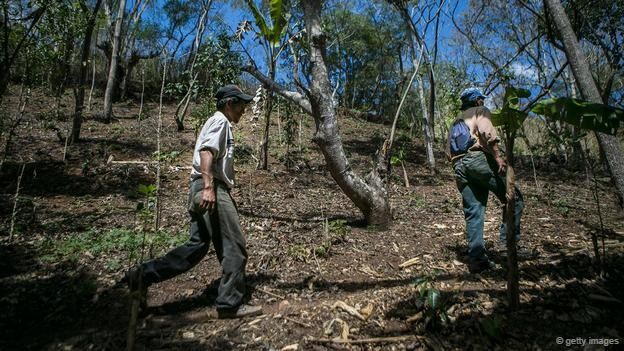
Image copyrightBBC World ServiceImage caption last year, coffee rust caused severe damage to farms in Nicaragua. This may be an ominous sign of what will happen next (photo: Getty Images)
Some people worry that human efforts to meet these challenges will only backfire and cause more serious environmental damage. Others believe that the only cure is to start with the coffee drink itself and change its favorite aroma. And no matter what the answer is, savor your espresso while you still have the chance: coffee as we know it may be coming to an end.
To some extent, the problem is that people's tastes are getting more and more delicate. There are two main varieties of commercial coffee beans: Arabica coffee (Coffea Arabica) and Robusta coffee (Coffea Robusta). The former is more fragrant and the latter is more bitter. So far, Arabica coffee beans have become a favorite of people all over the world because of their complex and multi-layered taste, accounting for 70% of the entire coffee beverage market.
The well-loved elegance of coffee comes at the expense of the strength of the plant. However, it is much more sensitive to stress than its formidable species. As BBC magazine recently reported, almost all commercial Arabica coffee trees are introduced from a very small number of coffee plants in the mountains of Ethiopia. This makes it very low in genetic diversity and very vulnerable to climate change.
Arabica coffee trees grow best in relatively mild temperatures, which range from 18 to 20 degrees Celsius. At the same time, Arabica coffee trees also need mild and regular rainfall.
"it also has very special requirements for climate, so you can only find a few suitable places around the world," says Christian Bunn of Humboldt University University in Berlin. This makes it very different from other crops, such as corn, which has been cultivated for thousands of years, and it can adapt to many different environments.
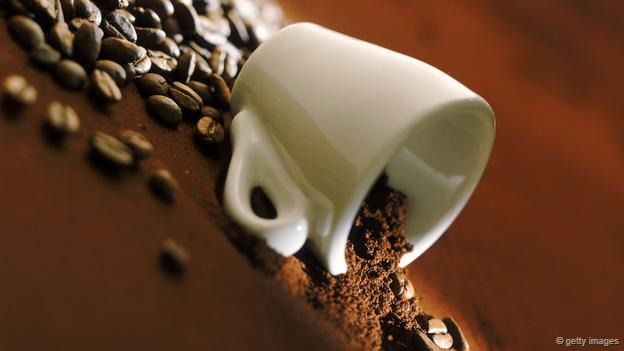
Image copyrightBBC World ServiceImage caption, does the caffeine we use to refresh our minds do great damage to the environment? (photo: Getty Images)
The delicate Arabica coffee tree is precisely unable to adapt to the environmental conditions that have become different and unpredictable with global warming. In Mexico, for example, soaring temperatures seem to be accompanied by more intense rainfall, destroying coffee trees before they bear fruit.
"Coffee trees bloom for only 48 hours, so in the event of an accident during flowering, such as a big storm sweeping the area, the whole crop will be wiped out," explains Ainhoa Magrach of the Institute of Terrestrial Ecology (Institute of Terrestrial Ecosystems) at the Federal Institute of Technology (ETH Zurich) in Zurich.
Coffee trees in other growing areas face the opposite problem: drought. When Oxfam interviewed coffee manufacturers in the Rwenzori Mountains mountains of Uganda, they complained that the flowers dried up before the coffee was born because of the high temperature and drought. Even if it can blossom and bear fruit, the coffee beans are wrinkled and small.
The natural enemies of coffee trees can survive in drier and hotter weather, which causes more trouble. These natural enemies include both pests and blight, such as leaf miner, coffee bark beetle and powder beetle, and the latter such as leaf rust. In the most recent epidemic, coffee trees in central America were eroded by leaf rust, and the harvest fell by 20% in 2013 alone. However, as the climate gets warmer, such disasters may become more common.
It can be difficult to separate a single, abnormal disaster event from a larger trend, so it is not easy to estimate long-term losses. But a team of researchers based on observations of changes in coffee production in Tanzania since the 1960s found that coffee crop production had fallen from a peak of 500kg per hectare that year to just 300kg today. Crucially, the change in the coffee crop seems to be closely related to the local temperature rising by about 0.3 degrees Celsius every 10 years, and the associated decreasing rainfall.
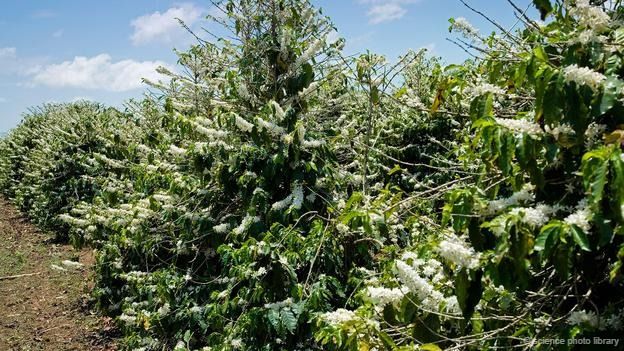
Image copyrightBBC World ServiceImage caption's annual coffee harvest may depend on flowering days, during which coffee trees are vulnerable to extreme weather (photo: Science Photo Library)
All of the above paint a bleak picture of the future. Using the latest global climate change data, Boone predicts that the area of land suitable for planting Arabica coffee trees could be halved by 2050. Traditional coffee-producing areas, such as Vietnam, India and much of Central America, will be particularly hard hit.
This will have equally serious consequences for coffee farmers and coffee lovers. First of all, we can expect that coffee may become a luxury. In his doctoral thesis, Boone calculated that the price of coffee would soar by about 25%. He pointed out that in contrast to other crops, as technology and productivity continue to improve, their prices will become cheaper and cheaper, and this change in the price of coffee will be particularly striking. Boone said that if you take into account the situation of other agricultural products, in fact, the price of coffee will be 50% higher than when it was not affected by climate change.
However, coffee farmers are unlikely to benefit. After years of turmoil, many coffee farmers are likely to give up coffee and grow more stable crops. "when we presented the results of the study to coffee manufacturers, everyone told us that this prediction was correct," Boone said. "for example, people in the low-altitude regions of Central America have long given up coffee production and turned to rubber cultivation.
Considering that there is money to be made, people from other regions will almost certainly join the coffee production to meet our needs. And this may cause great damage to the environment. Recently, Megrah marked on the map an area suitable for planting Arabica coffee trees and compared it with areas of interest in nature.
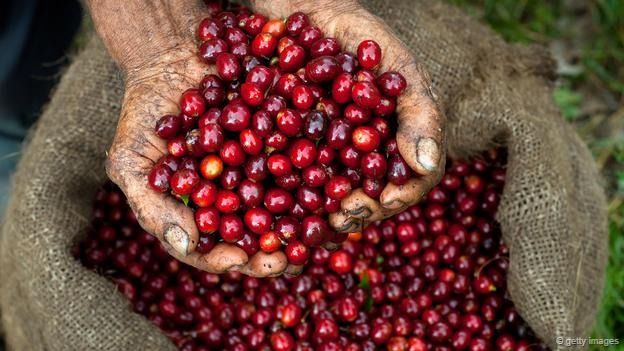
The livelihood of Image copyrightBBC World ServiceImage caption's 25 million people depends on scientists finding a way to protect fragile and sensitive coffee trees and ripe coffee fruits. (photo source: Getty Images)
In a worst-case scenario, she found that to meet the expected demand for coffee, we would need to erode 2.2 million hectares of rainforest, the size of Wales, which would greatly exacerbate the loss of biodiversity.
There may also be a better solution. Given the strong tolerance of Robusta coffee, it can better adapt to these changes; even Megrah's model suggests that its preferred producing area may expand as temperatures rise.
In this way, a simple change of taste can avoid the bankruptcy of the coffee industry. Of course, the premise is that humans can gradually like its bitterness. "it must be better for the forest," Megrah said. " In the future, she hopes that food labels will at least indicate whether coffee beans are produced in ecologically fragile areas, so that consumers will be aware of the environmental costs and will make more eco-ethical consumption behavior.
Others believe that improved planting techniques can ensure a steady supply of coffee. Along these lines, the Coffee and Climate Organization (Coffee and Climate) Action Plan is helping more than a dozen different coffee producers work together to meet the coming challenges and work together to find the best way out.
One of the options, for example, is to graft Arabica coffee trees onto the roots of Robusta coffee trees to develop a hybrid that is better resistant to drought while retaining its much-loved aroma.
By the same token, selective breeding can help develop a variety that combines the advantages of both Robusta and Arabica. Megrah added: "people are studying this, but we are not sure when this new tree species will be developed."
Whether we can find the answer as soon as possible determines whether the livelihood problems of coffee farmers and other coffee businessmen can be solved. According to one estimate, there are at least 25 million people in this group. Right now, as Efrank discovered in an interview in Mexico, coffee farmers face an excruciating feeling of uncertainty every day.
Although many coffee farmers listen to the weather forecast on TV and try their best to prepare for the coming torrential downpour, they still feel helpless and are at the mercy of forces beyond their control.
Some coffee farmers feel that the topic of climate change has almost become taboo. "We basically don't talk about climate," one coffee farmer told Frank. We already knew it was here, and there was nothing we could do. "
Important Notice :
前街咖啡 FrontStreet Coffee has moved to new addredd:
FrontStreet Coffee Address: 315,Donghua East Road,GuangZhou
Tel:020 38364473
- Prev

Under the third wave of coffee-- low-cost boutique coffee
More and more cafes and studios like to advertise themselves as boutique coffee, and the Internet propaganda, like Chinese Dream, calls for the era of boutique coffee is coming. So the question is, what is boutique coffee? Aside from how vivid the third wave of coffee is, coffee is first of all a drink, followed by culture, and finally life. Anything can have a product.
- Next
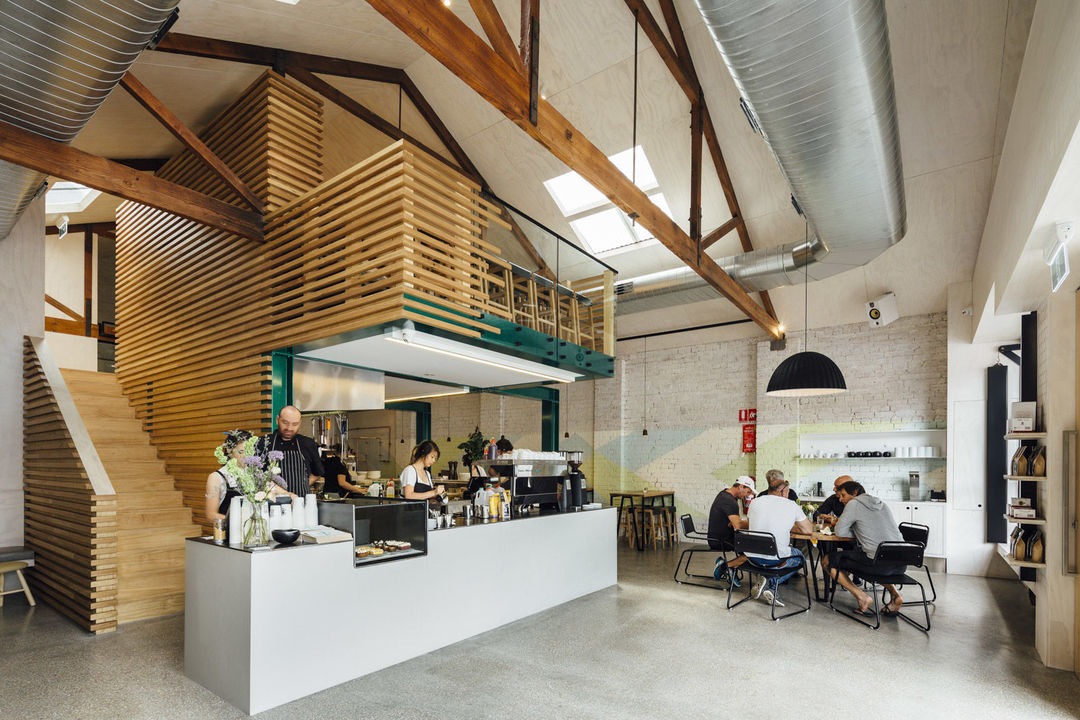
A personalized coffee shop converts a car repair shop into a coffee shop.
The wonderful mix of industry and modernity is a recent project by Australian architecture firm ZWEI to convert a car repair house into a coffee shop. Although they seem to have nothing to do with each other, when you open the skylight, put a circle of tables and chairs around the wall, and put coffee makers and all kinds of snacks, it is also a good place for ventilated and quiet afternoon tea. The shop is located in North Melbourne with white walls.
Related
- Customers have "changed" Manner's new products! Shop assistant: Please don't mess around!
- Remove sockets in customer areas at Starbucks stores?! Netizen: I won't go if I really tear it down
- What is the difference between the taste steps of sun-dried coffee and washed coffee? Why is sun-cured coffee sweeter and washed coffee sour?
- The recipe for salty grapefruit dirty is revealed! Coffee Festival salty grapefruit dirty coffee making materials parameters ratio milk share!
- How about the flavor of Sunlight 74158 at Sidamo Banshaha Mathieu Processing Factory in Ethiopia? 74158 Share the proportion of coffee brewing parameters!
- What effect does Italian American coffee with filter paper have? Will coffee taste better if it is put on filter paper at the bottom of the powder bowl?
- What is the color difference in coffee beans? What are the characteristics of honey processed coffee beans? Why are the anaerobically treated coffee beans uneven in color?
- How does novice Xiaobai quickly get started and make coffee? Newbies learn to make coffee by hand and share the specific steps and process process!
- Costa tea has a shelf life of 100 years?! Expert: Unable to verify
- It's a huge uproar! American milk addition was rejected by Manner employees?!

